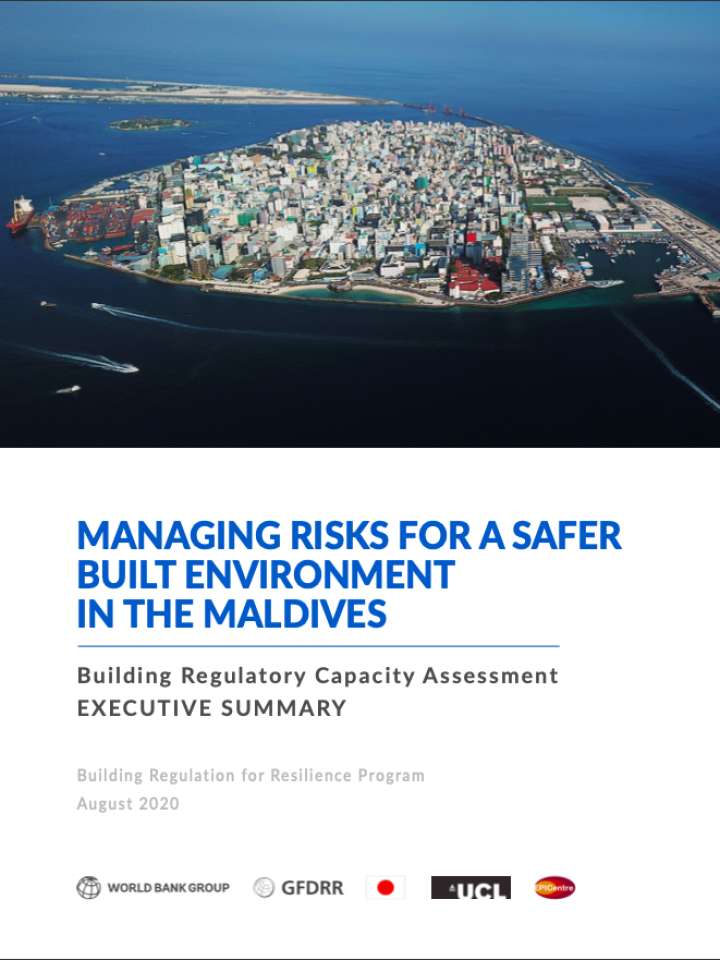Managing risks for a safer built environment in the Maldives: building regulatory capacity assessment
The Republic of Maldives includes 1,192 small, low- lying islands grouped into 26 atolls that together form a chain over 820 km in length, over an area of more than 90,000 square km in the Indian Ocean. However, the total land area in the Maldives is less than 300km2. This makes it the smallest country in Asia in terms of land area as well as in population.
However, its growth is not homogeneous across all atolls: urbanization is expected to be concentrated on the reclaimed island of Hulhumalé, as well as designated Urban Regions in the outer atolls. This urbanisation has the potential to improve economic opportunities. However, there are also several challenges associated with this shift and concentration of population. Malé has transformed into an agglomeration of densely packed high-rise buildings, resulting in greater incidence of fire and unsafe construction practices that have recently resulted in several injuries and fatalities.
The Maldives is vulnerable to several natural hazards, the prevailing ones being meteorological (i.e., tropical cyclones and storms, thunder storms, heavy rainfall, and drought) and hydrological (i.e., floods induced by heavy rainfall, storm surges, swell waves, and udha) in nature. The low elevation of the islands above sea level makes them particularly vulnerable to coastal flooding, events that are worsened by climate change. Maldives also has a low risk to earthquakes and is vulnerable to distal tsunami.
To facilitate the construction of safe and resilient buildings, comprehensive and effective building regulatory frameworks are needed. The components of a building regulatory framework, including building and land-use regulations, enabling legislation, and local compliance mechanisms, function together to ensure that a particular building, on a particular site, achieves minimum levels of performance and resilience.
Explore further
